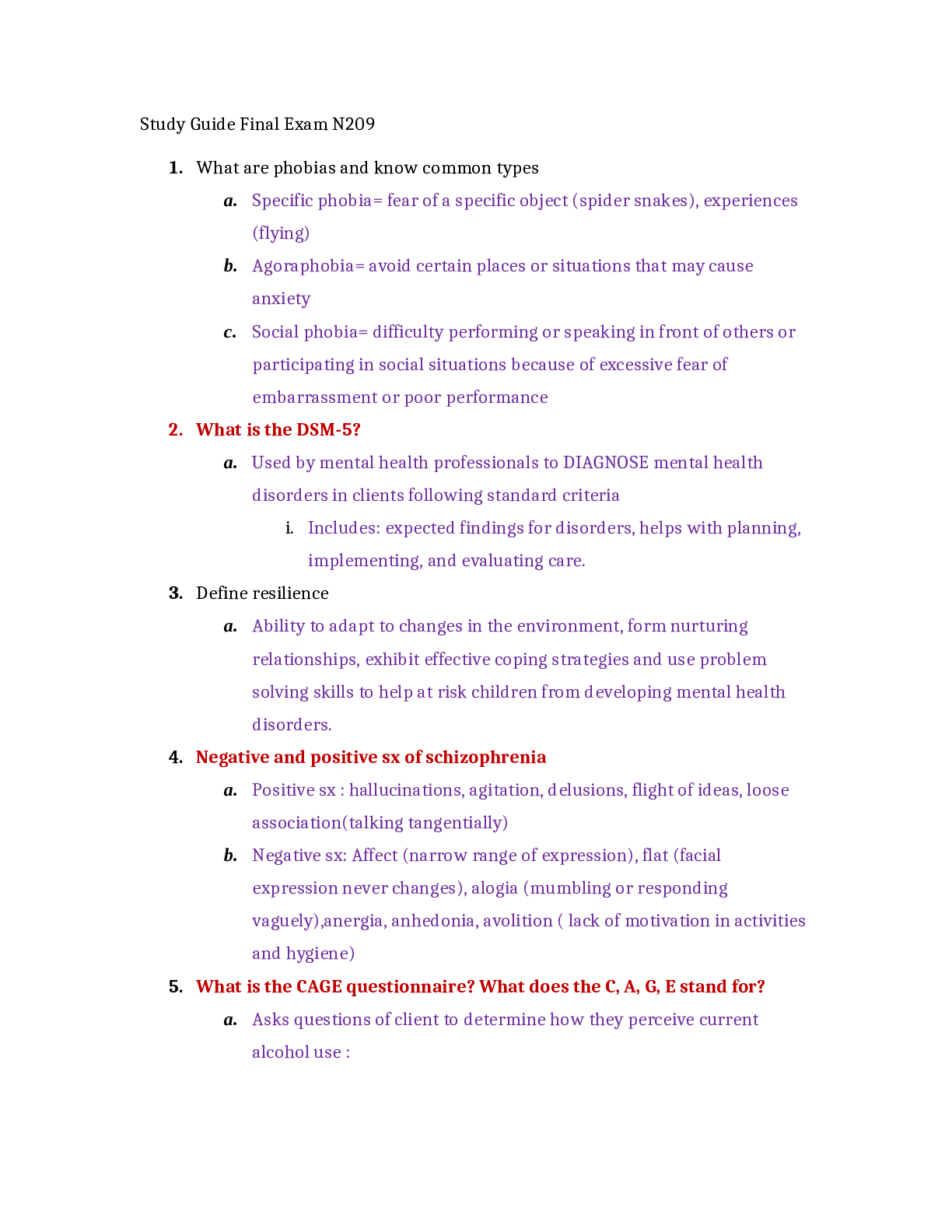*NURSING > STUDY GUIDE > Xavier University - NURS 200 Final 200 Exam Study Guide Final Exam Review (All)
Xavier University - NURS 200 Final 200 Exam Study Guide Final Exam Review
Document Content and Description Below
1. Know hand hygiene pg. 612 (no matter how old always use hand hygiene) • #1 way to prevent infection, always use hand hygiene before patient contract (no matter the age) 2. Know standard precaut... ions pg. 619 (for AIDS use standard precuations) 3. Know airborne precautions #3 on pg. 619 4. Know how to remove a face mask #11 on pg. 623 • Remove the mask at the doorway to the client’s room. If using a respirator mask, remove it after leaving the room and closing the door 5. Know the information on hypertension on pg. 500-501 (not an immediate intervention, the answer is to schedule appointment to see the doctor) • Screening guidelines: screen for cardiac disease=if not normal, evaluate BP 6. Know table 29-4 on pg. 501 priority risk factor (know the numbers of hypertension) 7. Know how age and temperature are related on pg. 479 #1 Age (know that factors that affect body temp is age) 8. What tasks can be delegated to a UAP? 9. Know hearing aids, skill 33-7 #1 on pg. 705 (help them be as independent as possible) 10. Know partial bed bath pg. 675 (what to do for partial bed bath and who gets a partial bed bath) 11. Know practice guidelines for bed making on pg. 709 (used linens do not go on the ground) 12. Know client teaching related to skin rashes on pg. 684 (read options very carefully) • Keep the area clean by washing it with a mild soap. Rinse the skin well and pat it dry 13. Know attentive listening book 26-1 “E” on pg. 420 (the answer is maintaining eye contact) 14. Know table 26-1 on pg. 420, using silence (being silent allows the patient to collect their thoughts and feelings and put them into words) 15. Know stereotyping in Table 26-2 on pg. 422 16. Table 26-1 on pg. 421 seeking clarification perception checking and seeking consensual validation (this will be a scenario that you will have to choose the seeking clarification comment form the scenario) 17. Know open-ended questions pg. 420 Table 26-1 (knowing the type of technique, using silence and opened ended questions, and what technique is being used either using silence or the open ended questions) • Asking broad questions that lead or invite the client to explore (elaborate, clarify, describe, compare, or illustrate) thoughts or feelings. Open-ended questions 18. Know Ensuing confidentiality of computer records on pg. 222 (never ever share your password with anyone) 19. Know SBAR Box 15-6 on pg. 238 (know that R stands for) 20. Know heart failure on pg. 1297 (left sided heart failure is failure of the lungs –respiratory system) 21. Know assessing the heart #6 on pg. 564 (mitral value) 22. Know impaired tissue perfusion physical assessment on pg. 1298 (know the bullet points) 23. Know a priority assessment if someone has numbness in their fingers or toes pg. 1299 (check circulation and pulse r/t peripheral circulation) 24. What would a patient be at risk for if they would be receiving fluids and not eating? (fluid retention and imbalance) 25. Know that a least invasive task that does not require an assessment can be delegated to a UAP (assisting with pt meals / feeling) 26. Skin fold measurements on pg. 1146 (must be months to years) 27. What is a priority of the nurse if a patient is not tolerating a tube feeding? (the patient has a tube and suction and their stomach hurts, so check the equipment to make sure it is working properly) 28. Know Lifespan considerations bullet 6 on pg. 528 (check skin turgor on sternum and clavicle for older adults) 29. Know table 30-8 on pg. 557 (know crackles) 30. What class of medications could decrease respiratory rate (answer is a narcotic do not pick digoxin) 31. Know what to teach a patient about the use of an incentive spirometer pg. 1254 (explain the purpose of the activity/ therapy)32. Know venturi mask pg. 1261 33. Know how to perform nasopharyngeal suctioning #8 on pg. 1270 (its going to ask you how long can you suction, the answer is 15 seconds) 34. Know the steps on inserting an oropharyngeal airway pg. 1265 #3 bullet point (know bullet points 3-7) 35. Know the lifespan considerations on pg. 102: Assessing older adults’ section (asks about ADL’s since ADL’s are self care the answer is how well they perform self care)36. Know the musculoskeletal assessment on pg. 514 and what would not be normal (older patients have brand new symptoms) 37. Know expressive aphasia pg. 581 38. Know the home care considerations on pg. 1055 (2 questions) (the things that will help them stay safe the most) (the things that will cause the most harm to them) 39. Know the home care considerations related to applying restraints on pg. 665 (know bullet point 2 for restraints) • Restraints may be necessary for clients in wheelchairs or in the home. Safety guidelines apply in all cases. Assess the knowledge and skill of all caregivers in the use of restraints and educate as indicated 40. Know that it is important for a patient to do as much as they can for themselves, nurses should promote independence 41. Know how to teach a patient about using a walker pg. 1056 (walker first then patient) 42. Know how to use crutches pg. 1056-1057 (upper body specifically the arms) • Crutches may be a temporary need for some clients and a permanent one for others 43. Know passive range of motion pg. 1050 (answer going to have the word joint in it) • Another person moves each of the client’s joints through its complete range of movement, maximally stretching all muscle groups within each plane over each joint. 44. Know how to perform log rolling #6 select all that apply (3 total) pg. 1042 (bullet points) • Document all relevant information • Record: 45. Know what to do before moving a patient in bed. Safety!! #4 pg. 1047 (lock wheels and lower the bed before 46. Know the table 11-1 on pg. 158 assessing (3 questions related to this table) (focus on assessing and evaluation, why would you assess and evaluate because its part of the nursing process)47. Why do nurses perform physical assessments? Pg. 167 Examining section (establish a baseline)48. Know the nursing process introduction paragraph on pg. 155 and the scope of nursing on pg. 13-14 (the roll of nurses is promoting wellbeing and giving emotional support) • Introduction paragraph 49. Know the type of assessments in table 11-3 on pg. 161 (focus on emergency) • Emergency assessment 50. Know types of data on pg. 160-161 (objective and subjective data) • Subjective 52. What would be an appropriate nursing diagnosis R/T BMI? BMI is on pg. 1131 (focus on nutrition imbalance and underweight) 54. What is a primary goal when caring for a patient who has an infectious disease? (prevent spreading to others) 53. When writing short-term goals what outcomes are most realistic or achievable? (know the outcomes are realistic and achiiveable include the patient in something they can do, write goeals together) 56. Know the introduction paragraph on pg. 208 R/T evaluation within the nursing process (know that is evaluated based patient outcomes) • The nursing process is action oriented, client centered, and outcome directed. After developing a plan of care based on the assessing and diagnosing phases, the 57. What would be an appropriate nursing diagnosis for whooping cough? (ineffective airway clearance)58. What is a patient at risk for after hip surgery? (fall risk) 59. Know the readiness of a patient to learn on pg. 441 factors affecting learning (2 questions) (appropriate time when pt should be educated) (Pt readiness for education) • Readiness i. Readiness to learn is the demonstration of behaviors or cues that reflect 60. Know the learning domains pg. 440 (2 questions) (definition questions) • Cognitive domain i. The “thinking” domain 61. Know the lifespan considerations on pg. 446 select all that apply (3) (know older adults in lifespan considerations use different techniques for older alduts) • For older adults to be motivated to learn, the material must be practical 62. Know what promotes self-care behaviors pg. 454 (promoting self care behaviors know last bullet point on 454) • Learning is more effective 63. Know dietary data on pg. 1147 (promote healthy diet) • Dietary data includes the client’s usual eating patterns and habits, food 64. If a nurse was teaching at a health fair and was education on poison control, what age group should she focus on? (the younger the better) 65. Know assessing body temperature on pg. 481-482: Axillary temperature (know its axillary and leave it there for 1 minute) 66. Know section on assessing on Pg. 159 and on table 11-2 (baseline and history and why are they there)67. Know how to pick out a reliable/measurable statement pg. 197 (will have a number in it because that will be most reliable and measurable) [Show More]
Last updated: 1 year ago
Preview 1 out of 39 pages

Reviews( 0 )
Document information
Connected school, study & course
About the document
Uploaded On
Jun 02, 2020
Number of pages
39
Written in
Additional information
This document has been written for:
Uploaded
Jun 02, 2020
Downloads
0
Views
103


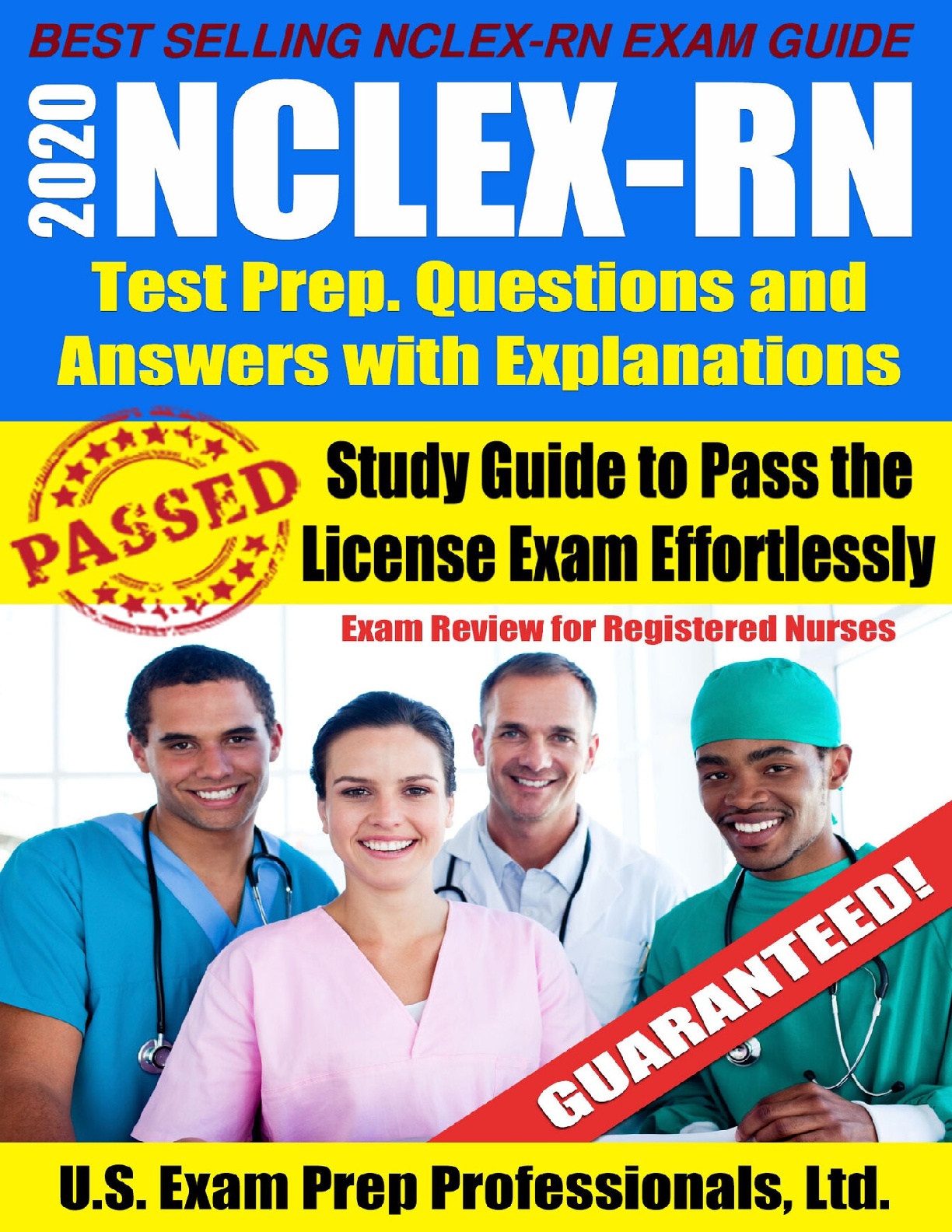
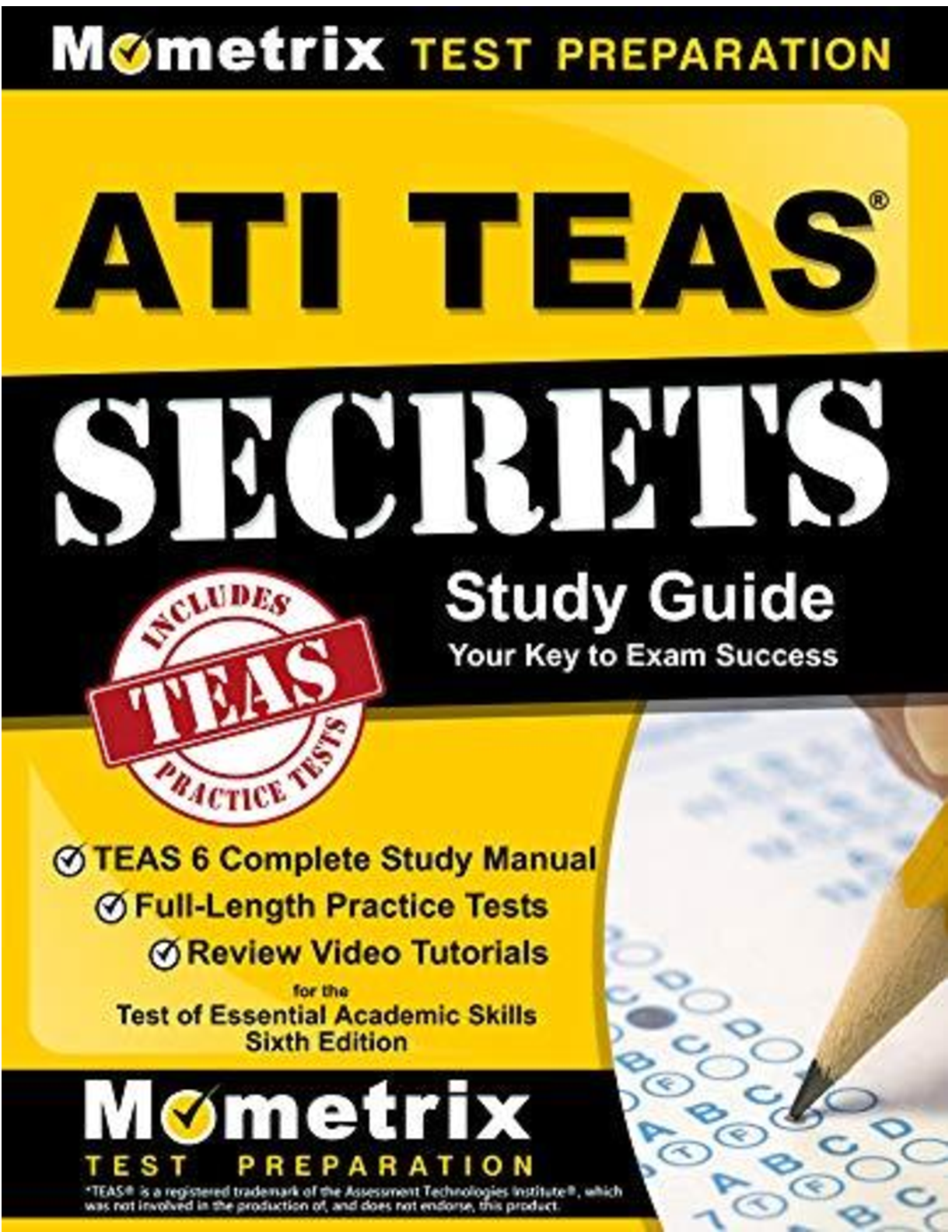
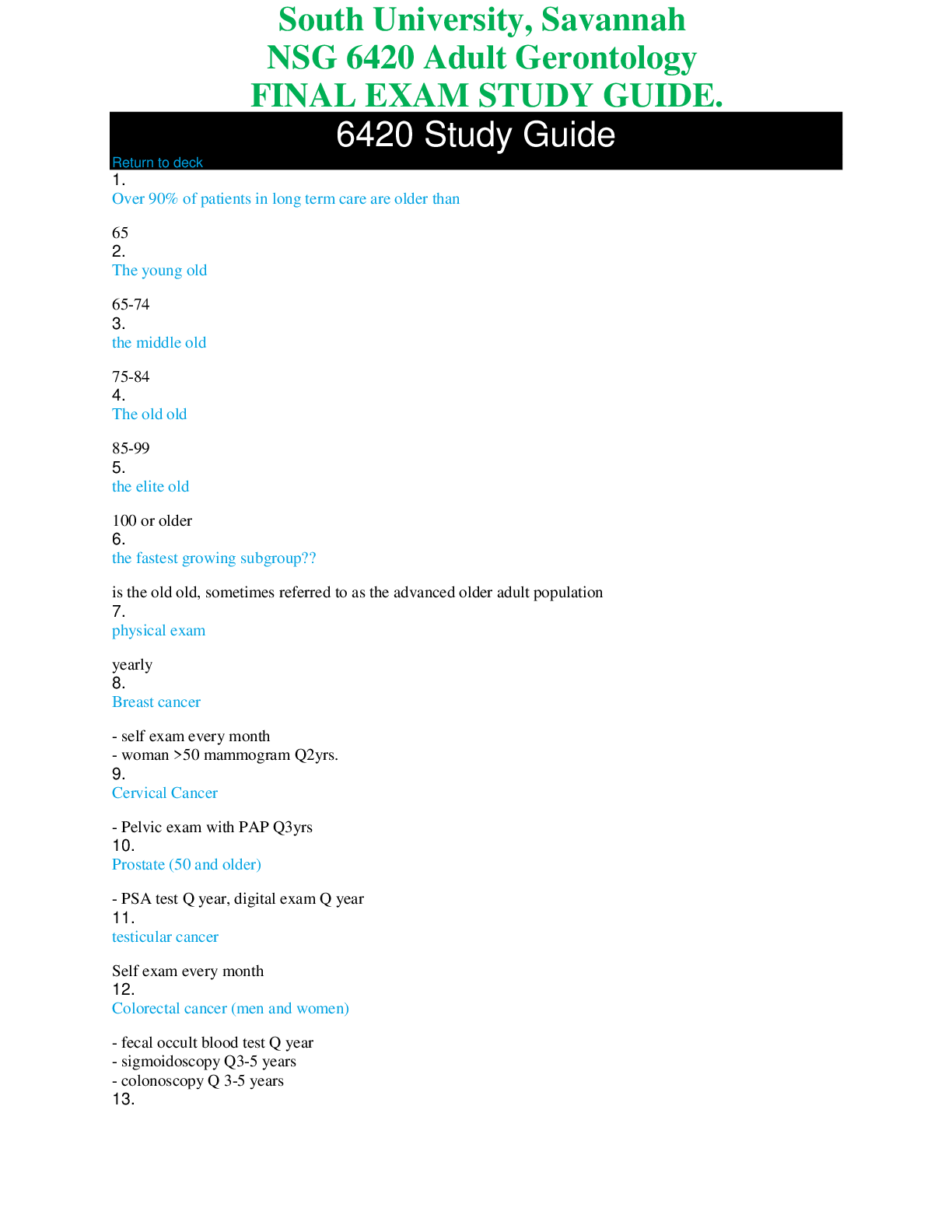
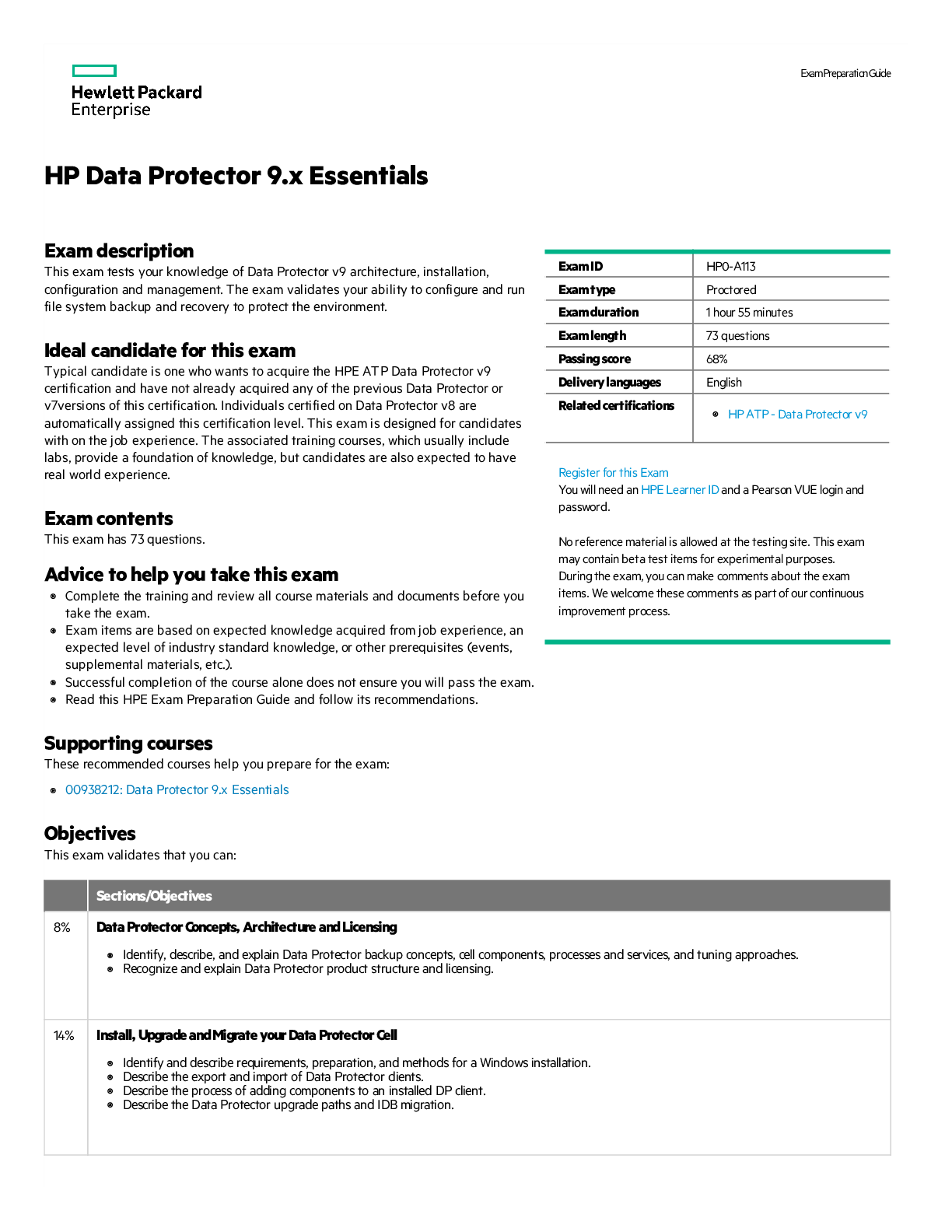



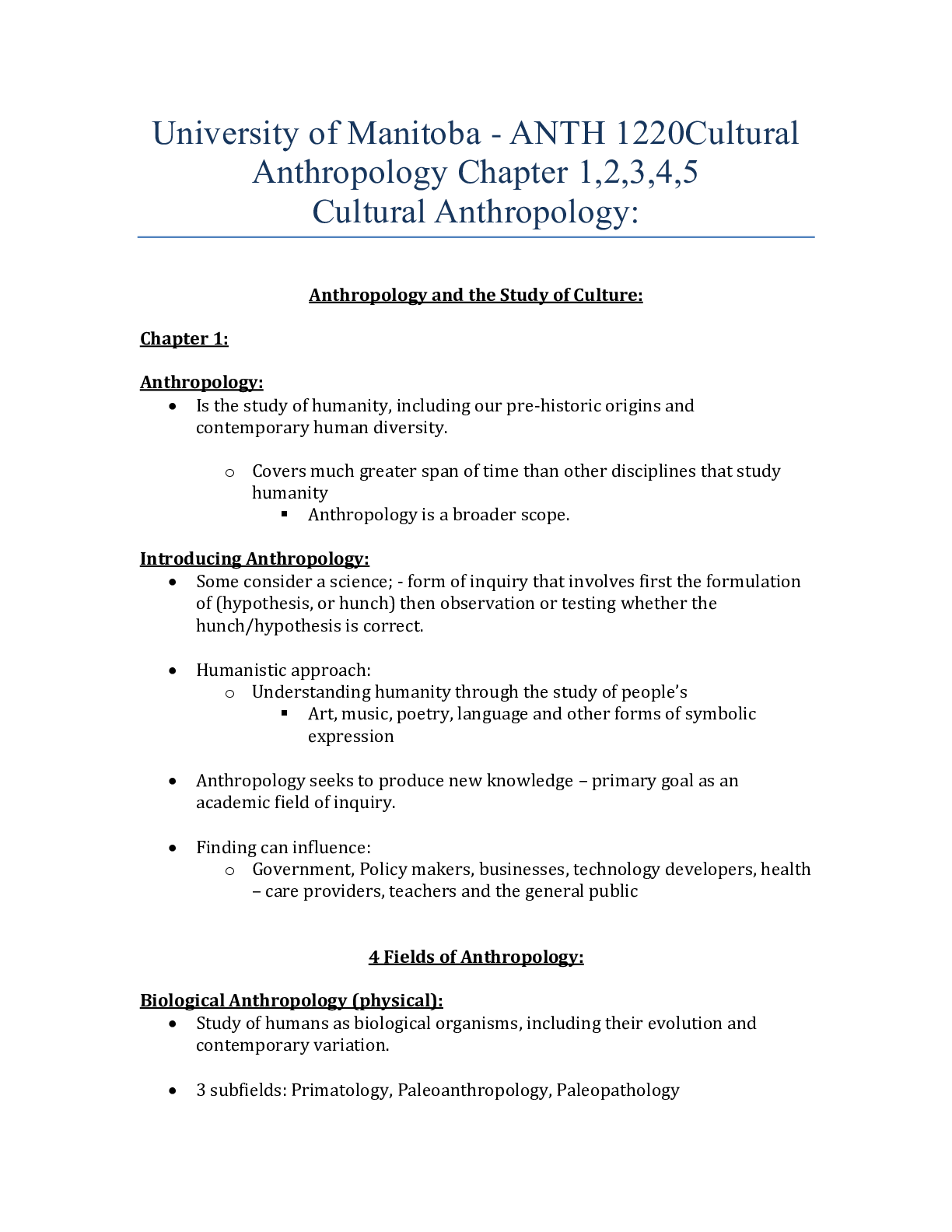


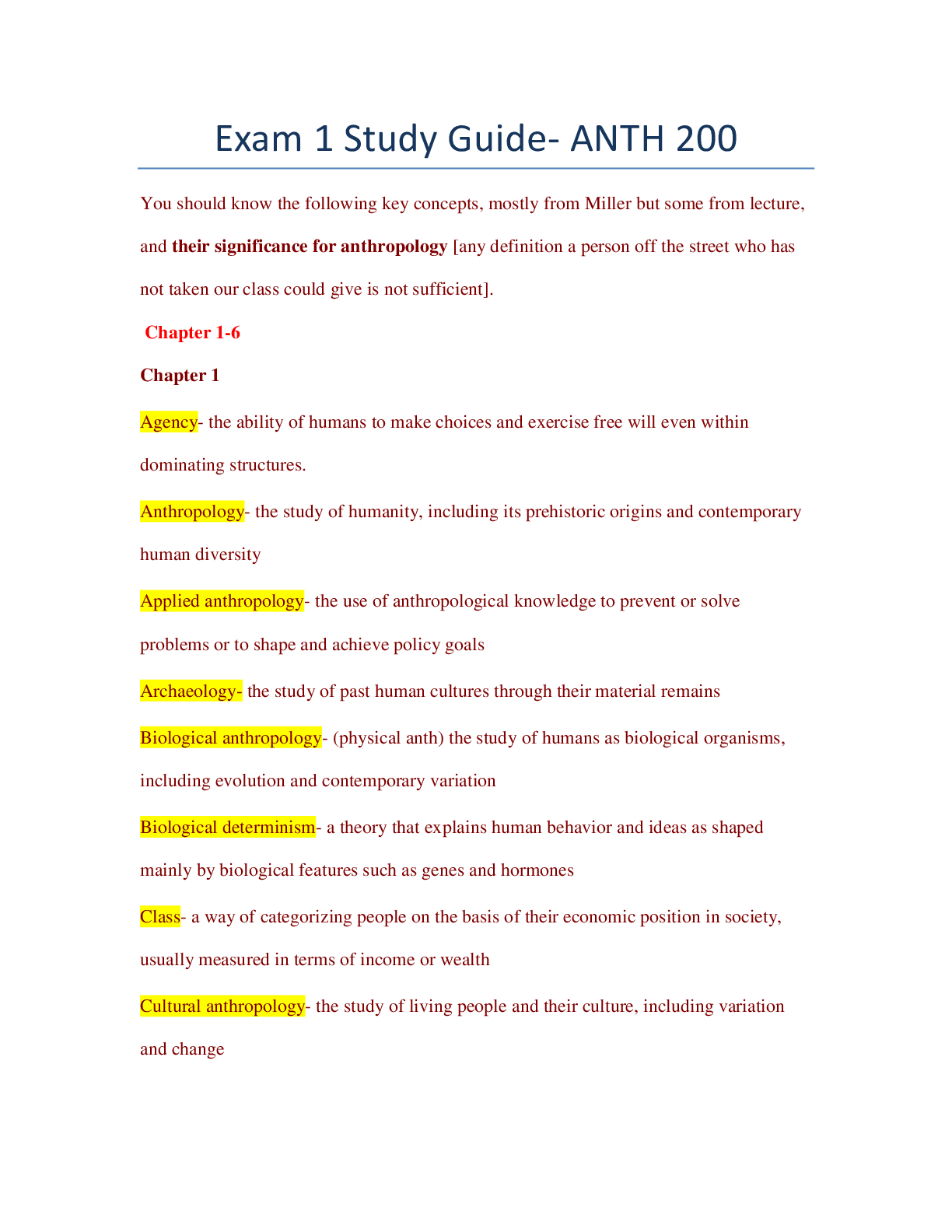

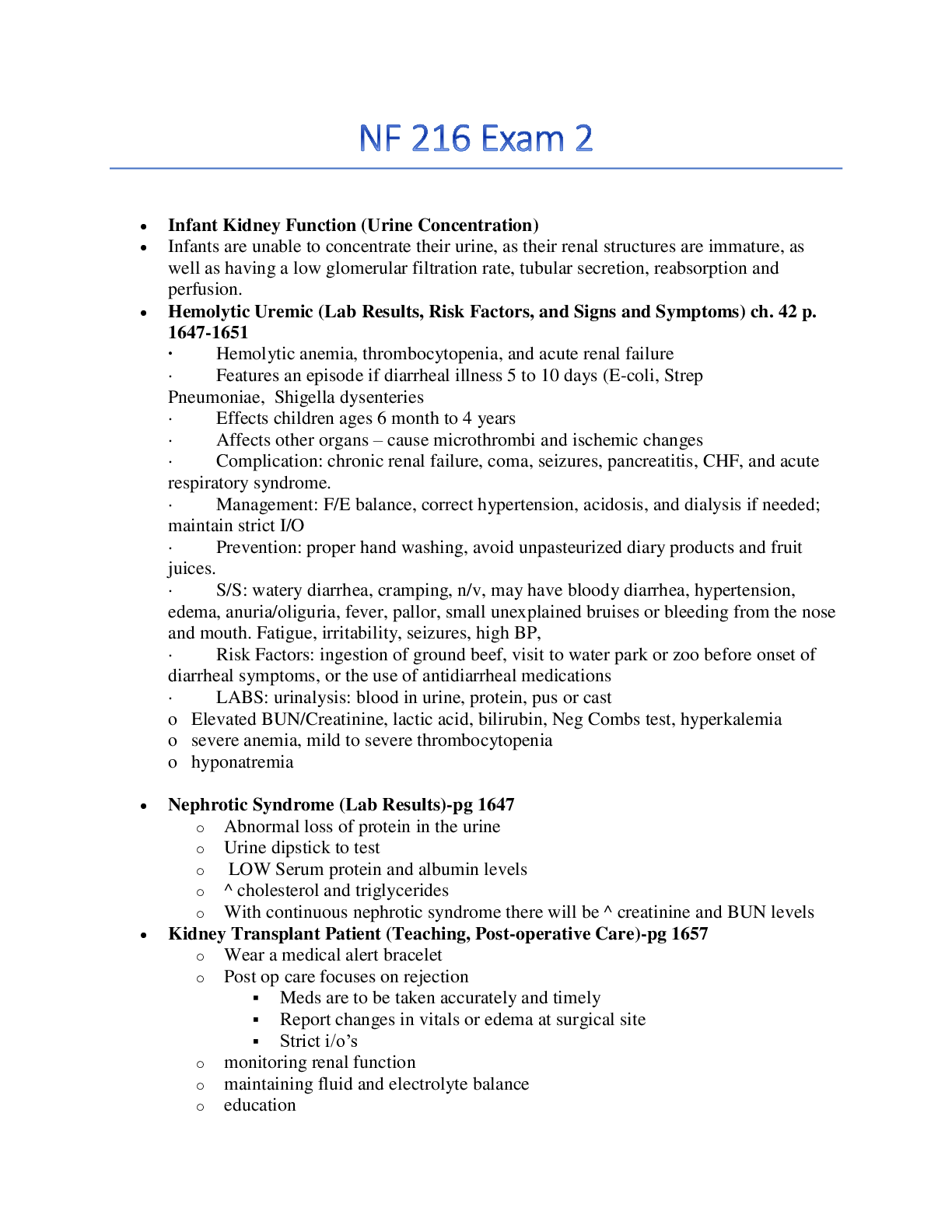
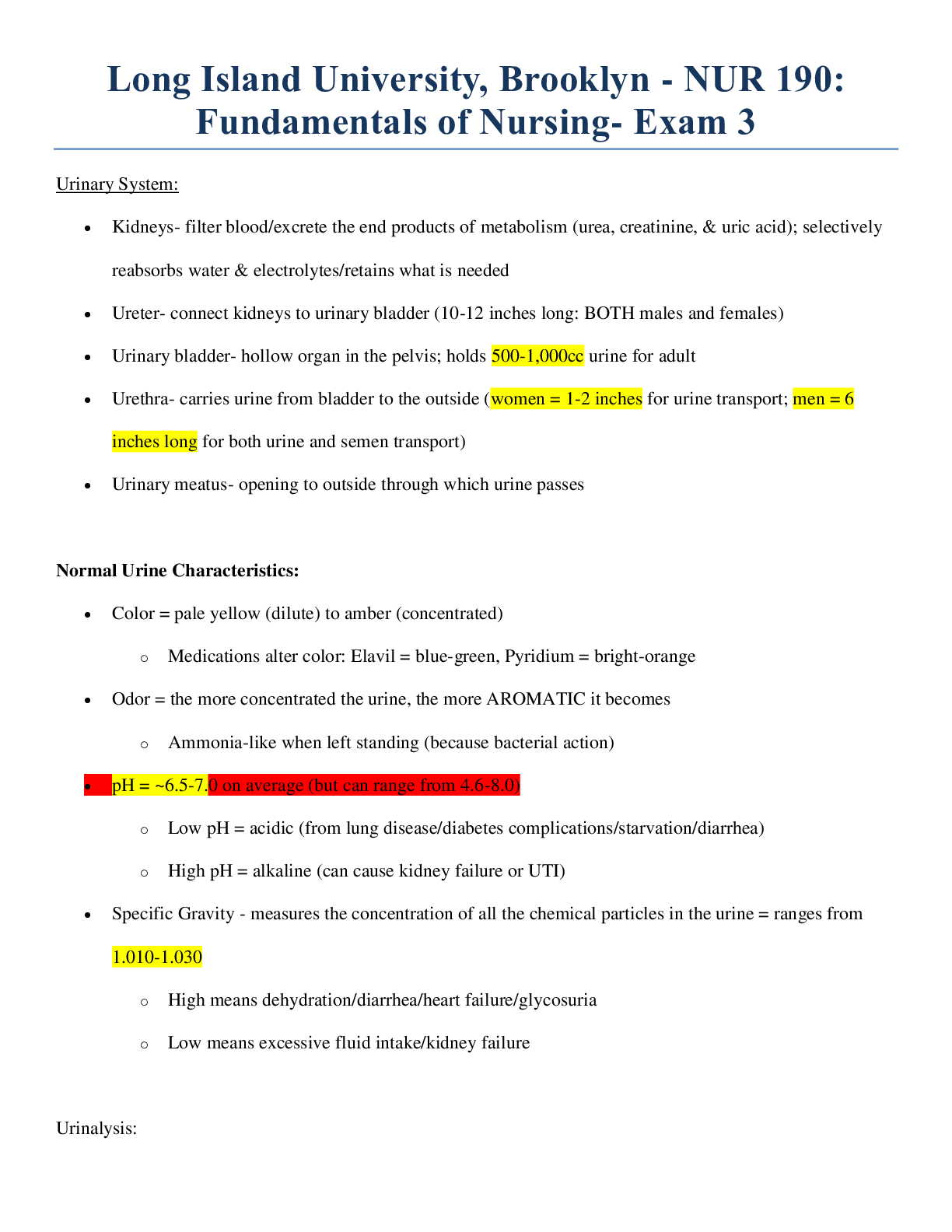


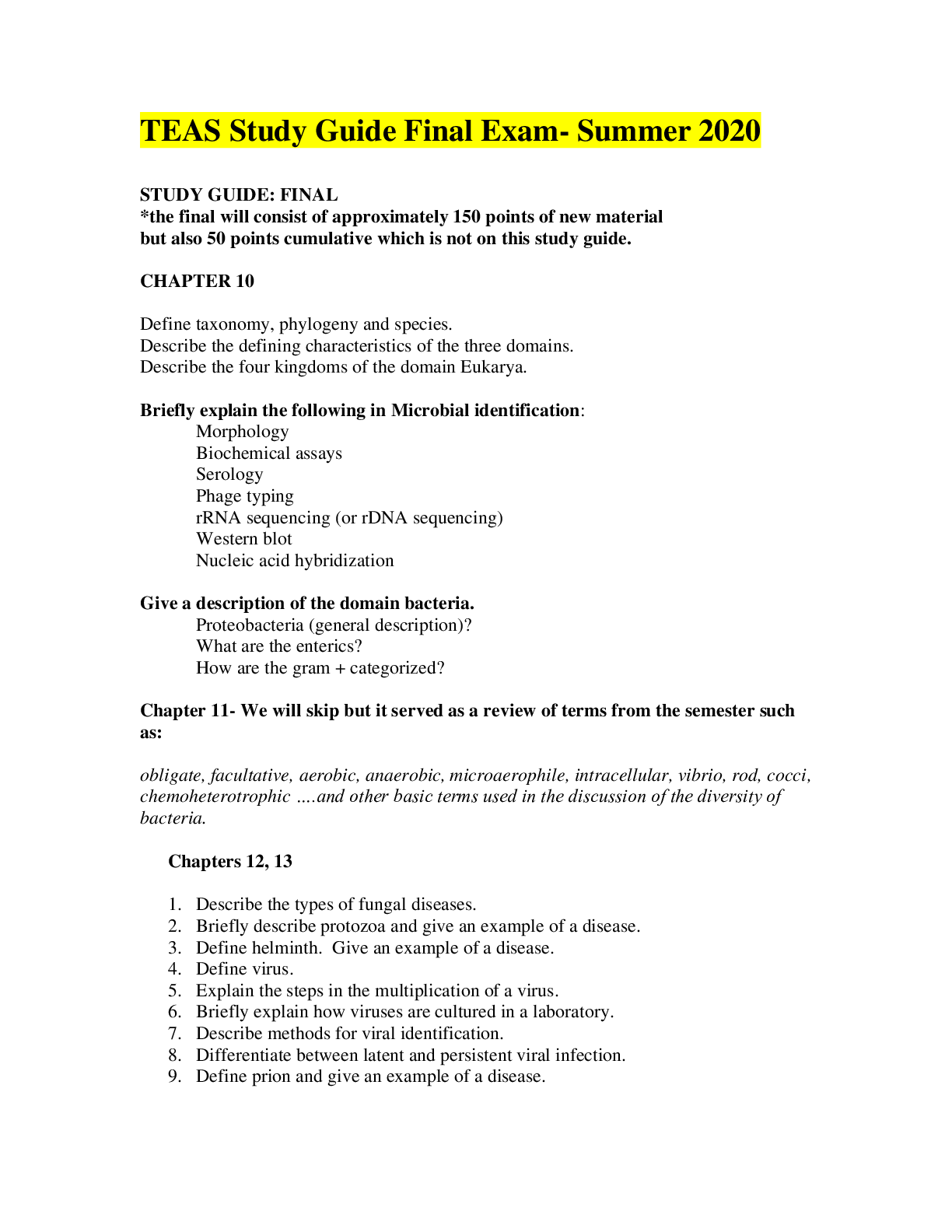



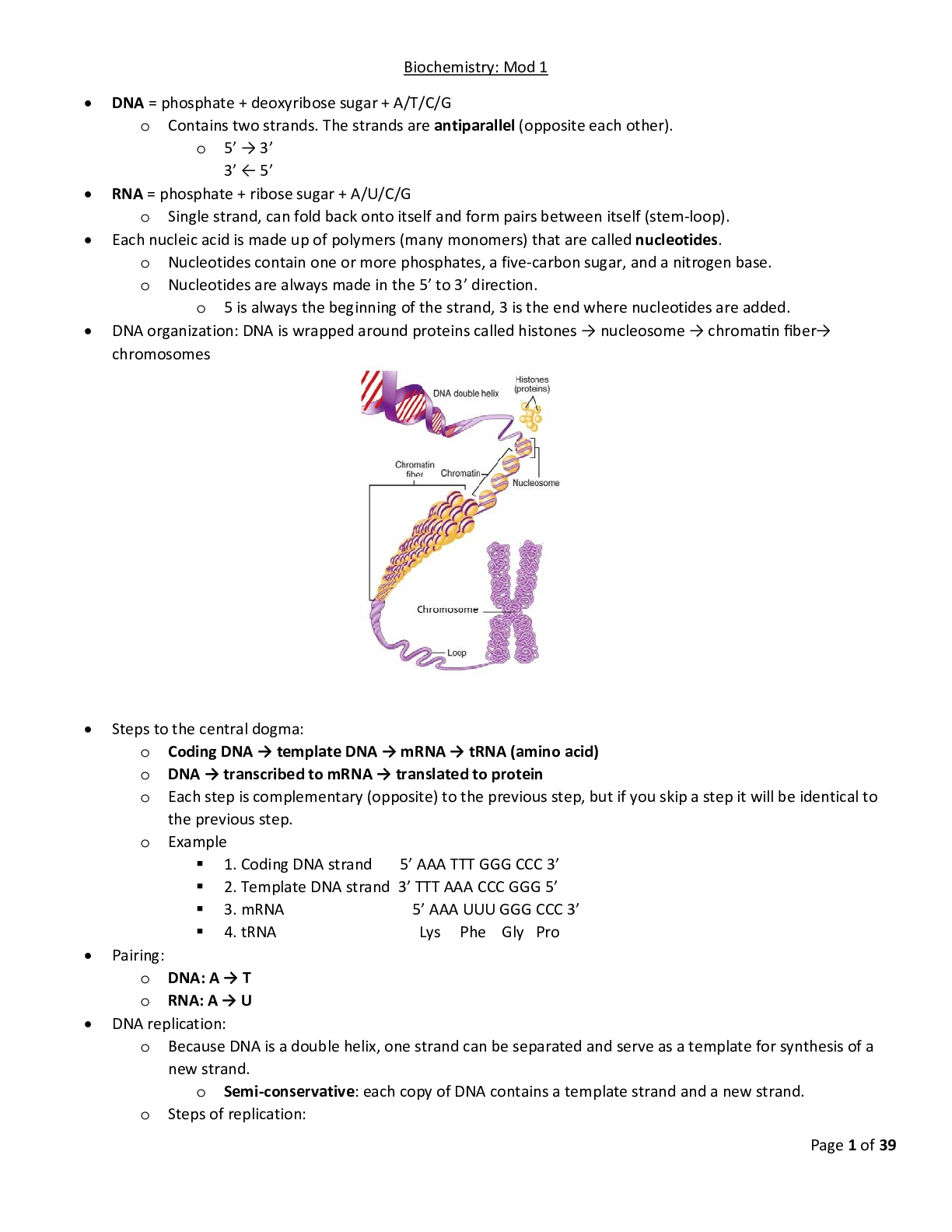

.png)

